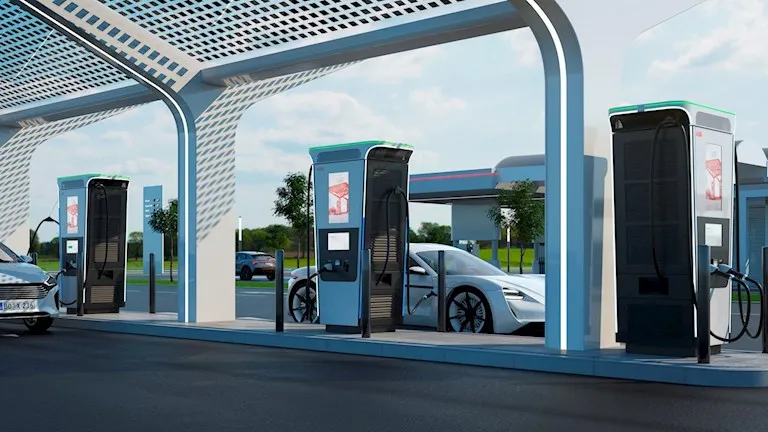In 2023, electric vehicles (EVs) are no longer a niche but a mainstream choice for drivers worldwide. According to Bloomberg Green, global EV sales are expected to hit 14 million by the end of the year, a staggering 35% increase from 2022. One of the key enablers of this rapid adoption is the advancement of fast charging networks. With EVs increasingly becoming part of our everyday lives, understanding fast charging technology is crucial. In this article, we’ll explore how these networks are revolutionizing the future of electric cars, the benefits they bring, and what this means for consumers and the broader automotive industry.
The Evolution of Fast Charging Networks
The Rise of Fast Charging Stations
Fast charging stations, also known as DC fast chargers, have transformed the EV landscape by significantly reducing charging times. Unlike traditional Level 2 chargers that can take several hours to fully charge an EV, fast chargers can replenish 80% of a vehicle’s battery in just 30 minutes. According to InsideEVs, as of October 2023, there are over 35,000 fast charging stations worldwide, a number that is projected to increase by 50% by 2025.
Key Players in the Fast Charging Race
Several companies are leading the charge (pun intended) in expanding fast charging infrastructure. Tesla’s Supercharger network, with over 5,000 stations globally, is one of the most extensive. Meanwhile, Electrify America, a subsidiary of Volkswagen, has over 800 locations in the U.S., offering some of the fastest charging speeds available. Other notable players include Ionity in Europe, a joint venture between BMW, Ford, Hyundai, and Volkswagen, and ChargePoint, which recently surpassed 200,000 charging spots worldwide.
Benefits of Fast Charging Networks
Convenience and Accessibility
Fast charging networks make long-distance travel with EVs not only possible but convenient. With strategically placed stations along major highways, drivers can plan road trips without the anxiety of running out of power. According to a 2023 survey by CleanTechnica, 70% of EV owners cited the availability of fast chargers as a key factor in their purchasing decision.
Economic and Environmental Impact
Fast charging networks are not only a boon for EV owners but also for local economies and the environment. The International Energy Agency (IEA) reports that widespread adoption of fast charging could reduce global CO2 emissions by 1.5 gigatonnes annually by 2030. Additionally, the construction and operation of these stations create jobs and stimulate investment in renewable energy sources.
Technological Advancements
With advancements in battery technology, such as solid-state batteries and improved thermal management systems, fast charging is becoming even more efficient. According to TechCrunch, new technologies are being developed that could reduce charging times to just 10 minutes, making EVs even more appealing to consumers accustomed to the convenience of traditional gas stations.
Practical Tips for EV Owners
How to Efficiently Use Fast Charging Stations
- Plan Your Route: Use apps like PlugShare or Tesla’s in-car navigation system to locate nearby fast chargers.
- Charge Smart: Avoid charging to 100% unless necessary to reduce charging time and prolong battery life.
- Peak Hours Awareness: Try charging during off-peak hours to avoid potential wait times and higher rates.
Where to Find Fast Chargers
Fast charging stations are increasingly available at locations such as:
- Highway Rest Areas: Convenient for long trips.
- Shopping Centers: Combine charging with errands or leisure activities.
- Workplaces: Many companies are installing chargers to support employee EV adoption.
What to Compare When Choosing an EV
When selecting an electric vehicle, consider:
- Charging Speed: Look for models that support higher charging rates to maximize the benefits of fast chargers.
- Range: Opt for a vehicle with a range that suits your typical driving needs.
- Network Compatibility: Ensure your vehicle is compatible with the prevalent charging networks in your area.
The Road Ahead: The Future of Fast Charging Networks
Looking forward, the future of fast charging networks is promising. As battery technologies improve and charging stations become more ubiquitous, the transition to electric vehicles will accelerate. The global push towards sustainability and renewable energy will likely see governments and private companies investing heavily in charging infrastructure. According to Reuters Mobility, the global market for EV charging stations is expected to grow at a compound annual growth rate (CAGR) of 40% over the next decade.
In conclusion, fast charging networks are not just powering the future of electric cars—they are catalyzing a broader transformation in how we think about transportation and energy consumption. As these networks expand, they will play a pivotal role in reducing carbon footprints and fostering a cleaner, more sustainable future. So, whether you’re a current EV owner or considering making the switch, fast charging is an exciting development worth keeping an eye on.
What do you think about the fast-paced evolution of fast charging networks? Are you ready to embrace the future of electric mobility? Share your thoughts in the comments below, and let’s spark a conversation about the electrifying future ahead!

